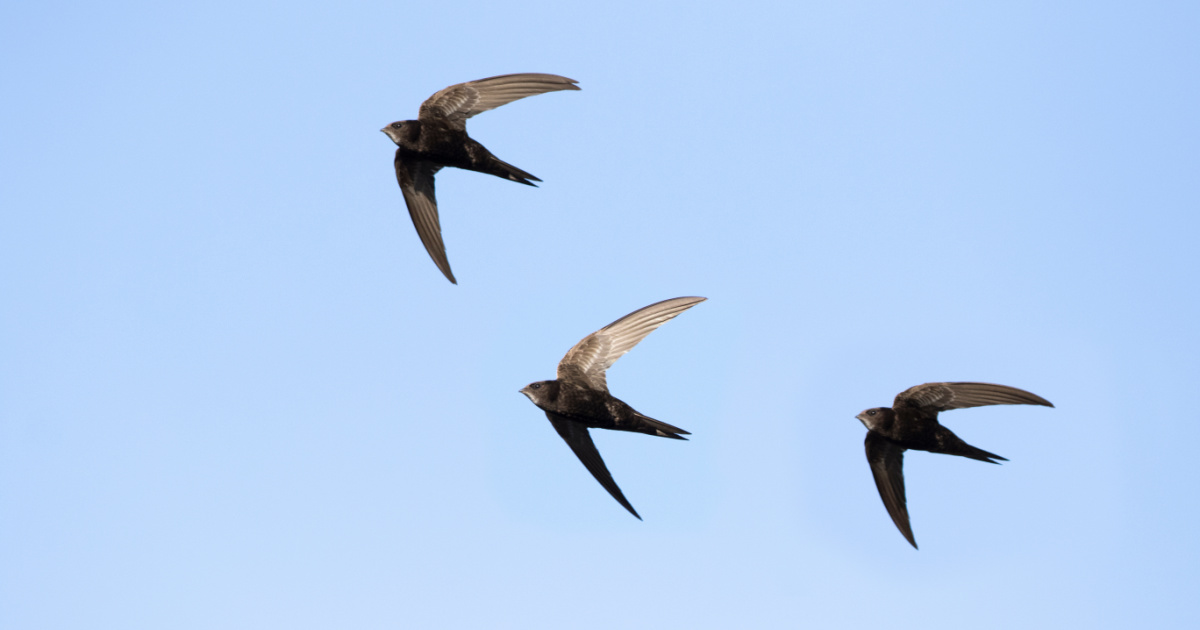
Unless you have bird feeders in your backyard (or your neighbors do), you probably spend more time watching birds flying as opposed to sitting.
But, how often do they have to take a rest with their feet on the ground?
If you’re talking about the common swift, the answer is 10 straight months.
Welsh ornithologist Ronald Lockley posited they were capable of this feat back in the 1970s, but in 2016, a group of researchers from Lund University in Sweden confirmed it as fact.
The team followed 13 adult swifts tagged with data loggers and accelerometers to record their flight activity. Some of the swifts were tracked for multiple years on their migration paths between Sweden and the Sahara and back again.
The results showed the swifts spend almost all of their time in the air.
The birds stayed consistently on land for about 10 months when they settle in to breed, but when they’re not breeding they spend more than 99.5% of their time flying.
Three of the birds never landed once in those 10 months, which is pretty impressive for a bird that weighs only about 1.4 ounces.
Study author Anders Hedenstrom says the difference between the three birds that never landed and the others could be feathers; the ones that stayed in the air had molted to gain new flight feathers before the start of the journey.
“Whether they moult or not could indicate small differences in their general condition or burden of parasites, and explain the flight behaviour of individual birds within the species.”
How do they manage to fly for so long, though?
“Common swifts have evolved to be very efficient flyers, with streamlined body shapes and long and narrow wings, generating lift force at low cost. This helps them to use less energy, though they can get a quick boost from insects that are also up in the air.”
Do they sleep, though?
“They might do as the frigate bird and sleep while gliding. Every day, at dusk and dawn, the common swift rises up to an altitude of about 1.2-1.9 miles. Perhaps they sleep during a declining glide, but we’re not sure.”
This is truly one amazing fact.
I had no idea such a feat was possible!
If you thought that was interesting, you might like to read a story that reveals Earth’s priciest precious metal isn’t gold or platinum and costs over $10,000 an ounce!